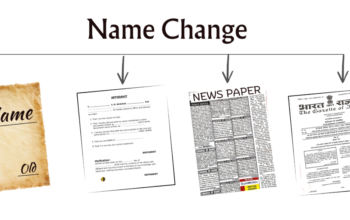Curious about how the world is fighting climate change with the help of banks? Discover how carbon credit banks are helping people and companies reduce pollution and build a cleaner planet—one step at a time.
Fighting climate change is now more important than ever. People, companies, and governments are searching for ways to cut pollution and protect the Earth. One method gaining attention is the use of carbon credits. These credits help reduce harmful gas emissions. But managing them is not easy. That’s where carbon credit banks come in.
These banks act like helpers in the carbon credit market. They make it easier for everyone to buy, sell, or save carbon credits. In this article, we will explore what carbon credit banks are, how they work, and how they support global sustainability goals.
Carbon Credits in Simple Terms
Carbon credits are like permits that allow a person or company to release a certain amount of carbon dioxide into the air. One carbon credit usually equals one tonne of carbon dioxide. If a company reduces its emissions, it can sell its extra credits to another company that needs them.
This system rewards those who reduce pollution and helps others meet environmental rules. It’s a way to balance out the amount of pollution being made, giving companies a chance to do better while still running their businesses.
What are Carbon Credit Banks?
Carbon credit banks are organisations that help manage carbon credits. They don’t just store them. Instead, they act like middlemen. They help people and businesses trade, save, or invest their carbon credits safely and easily.
Carbon credit banks also keep track of the credits. This means they record who owns them and how they are used. They can also advise companies on how to use their credits wisely. Some banks even help fund eco-friendly projects using these credits.
Thanks to carbon credit banks, it is now easier for companies to take part in the carbon credit system. This boosts trust in the market and encourages more action for the environment.
Why Are Carbon Credit Banks Important?
Carbon credit banks play a big role in the fight against climate change. They make sure that carbon credits are used fairly and correctly. Here’s how they help:
- They bring trust to the system: With proper record-keeping, no one can cheat the system.
- They make trading easy: Buyers and sellers can connect without hassle.
- They encourage climate projects: Some banks invest credits in green projects like tree planting or clean energy.
By offering support, carbon credit banks help move money and effort toward reducing pollution. That’s why their role in sustainability is so vital.
How Carbon Credit Banks Support Sustainability Goals
Sustainability means using our resources in a way that protects the future. Carbon credit banks support this in many ways. First, they allow businesses to take responsibility for their emissions.
By using carbon credits, companies can support clean energy, protect forests, and improve air quality. Carbon credit banks make it easier for them to join this system. The banks also help track results. That means it’s easier to see how much pollution is being reduced.
When businesses use these services, they move closer to meeting global sustainability goals like cutting greenhouse gas emissions and promoting greener choices.
Helping Small Businesses and Individuals
It’s not just large companies that benefit from carbon credit banks. Small businesses and even individuals can take part. Many carbon credit banks offer easy tools and advice for anyone who wants to offset their emissions.
This opens the door for more people to act. For example, a small bakery can buy credits to balance out the carbon it produces by using ovens. Or a traveller can offset their flight emissions.
With support from carbon credit banks, more people can make choices that protect the planet. That’s real progress toward a more sustainable world.
Making the Carbon Market More Accessible
Before carbon credit banks, trading carbon credits could be confusing. It was hard to know who to trust or how to start. But these banks changed that. They offer simple ways to trade and understand the process.
They also reduce the risks. By keeping good records and checking details, they stop fraud or double counting. This makes the whole market more reliable.
When the system works better, more people join. That means more action against pollution and more support for green goals.
Encouraging Clean Projects Around the World
Carbon credit banks don’t just help with trading. Many also support projects that cut pollution. For example, they might invest in planting trees or building wind farms. These projects earn carbon credits that can later be traded.
By funding such efforts, the banks directly support cleaner air, better water, and healthier communities. These actions match the wider sustainability goals set by the world, such as those in the Paris Agreement or the United Nations’ goals for climate action.
So, these banks are not just paper-pushers. They are part of real, on-the-ground solutions.
Education and Advice for a Greener Future
Another great thing about carbon credit banks is the education they provide. Many offer guides, tools, and support to help businesses and individuals understand carbon credits.
This knowledge leads to better choices. For instance, a company may learn how to cut emissions at the source rather than just buying credits. Or a school might teach students how their actions affect the environment.
As more people understand the impact of their choices, more start to act. This mindset change is just as important as the tools themselves.
Supporting Long-Term Climate Goals
Carbon credit banks do more than manage credits for today. They help plan for tomorrow. Many are working with experts and governments to improve how carbon credits are used over the long term.
They support better rules, smarter tracking, and stronger partnerships. With their help, the system can grow and reach more parts of the world. This ensures that the fight against climate change is not just a trend, but a lasting solution.
Their long-term vision helps make sure that efforts today will lead to a better, safer future.
Building a Culture of Responsibility
Carbon credit banks also shape how people and businesses think. They show that protecting the planet is not only possible—it’s also smart. When using carbon credits becomes a normal part of doing business, it sets a powerful example.
This builds a culture where everyone wants to do their part. Companies become more aware. Consumers become more mindful. And communities grow stronger together.
In the end, it’s not just about reducing emissions. It’s about creating a new way of thinking—one that values the planet and the people living on it.
Conclusion
Carbon credit banks are a key part of our journey toward a cleaner world. They help people and businesses take real steps to fight pollution. By making carbon credits easier to use and understand, they encourage more action across the globe.
Their work supports long-term sustainability goals, like reducing emissions and protecting natural resources. From education to project support, their impact is wide and deep. As more people join the system, the world moves closer to a greener, more responsible future.
Carbon credit banks are not just managing carbon—they’re shaping the path to a better planet.




